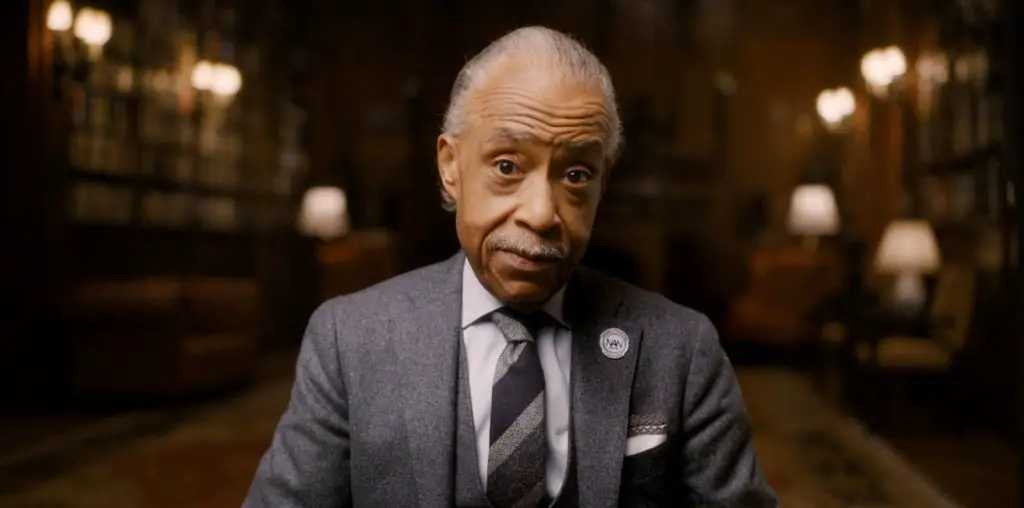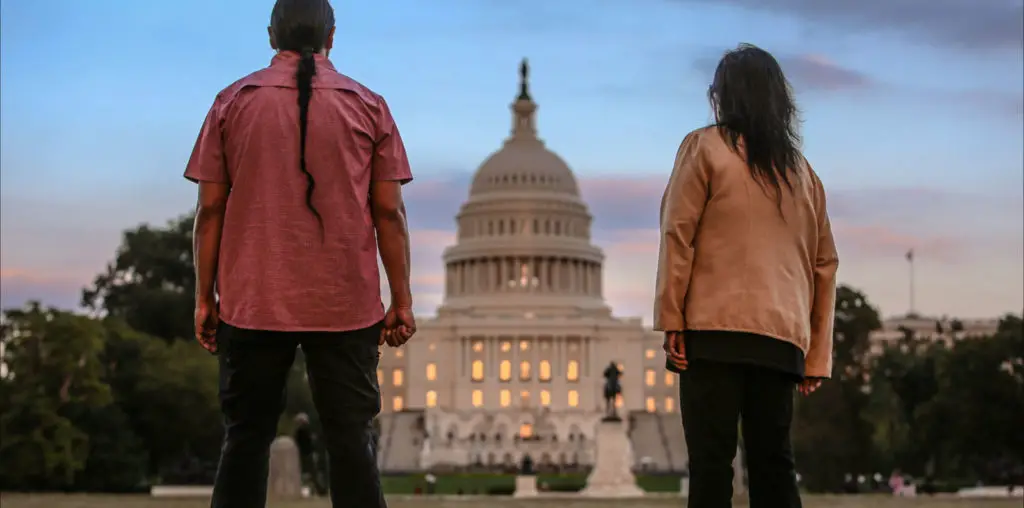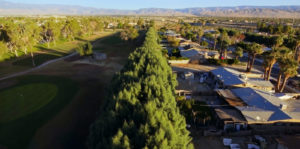
With overt ties to slavery, Confederate statues are an easy target for removal as America slowly undergoes its institutional racial reckoning. Directors Sara Newens and Mina T. Son’s documentary Racist Trees attempts to look at something far more obscure but no less divisive.
Written by Newens and Joanna Sokolowski, the film follows a small Palm Springs community that questions the origins of a row of non-indigenous, invasive tamarisk trees. These trees cordon off a predominantly black community from a wealthy, exclusive (and formerly whites-only) golf course. The question is, was it done with malicious intent, or was it for the protection of errant golf balls from sailing through windows or onto private property?
Divided into chapters, the movie looks at the formation of the man-made desert oasis known as Palm Springs. Particularly, Racist Trees focuses on the tiny community of Crossley Tract, a stretch named after its founder, African-American entrepreneur Lawrence Crossley. Originally the area was reservation land exclusively occupied by the indigenous Cahuilla people. In the 1900s, it was rebranded as a luxury resort destination, with the nearby film industry taking a particular interest by the 1930s.
Then, in 1959, residents living on a square mile of land serving as public housing (now considered downtown) were summarily booted from their homes to make room for a newly planned golf course. Today, residents of Crossley recognize the rising property values of surrounding communities while their homes remain stagnant. They want the trees gone, not only because they are a nuisance but because they also block the stunning mountain views, thus stagnating the value of their homes.
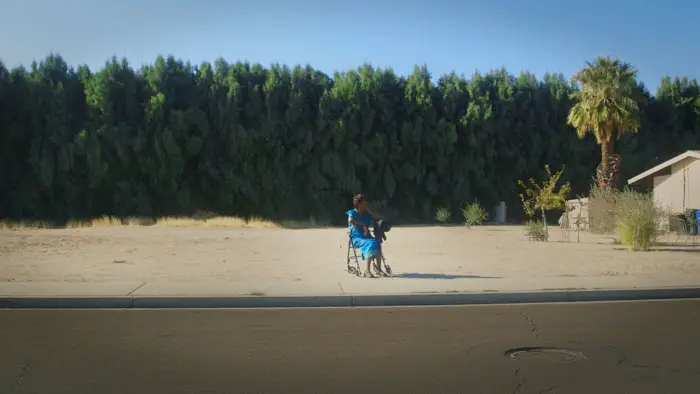
“…trees cordon off a predominantly black community from a wealthy, exclusive (and formerly whites-only) golf course.”
But the trees represent more than merely ornamental repercussions. The tamarisk also serves as an inviting home for rats and snakes. On top of that, according to an arborist, the trees can actually combust in the sweltering desert sun. Past requests by residents to remove the trees have been rejected by the city council. But, now they have a white spokesperson, Trae Daniel, who has access to a larger megaphone, and the council suddenly is taking notice. And lest you think this is an example of a “white savior” scenario, think again. Daniel happens to be a real estate agent who sees the inherent value in the area’s possible gentrification.
Opponents of the move weaponize the absurdist title, Racist Trees: “How can a tree be racist?” This obfuscates the fact that inequality and prejudice can be found throughout this country’s foundational and continual formation. While the trees themselves are neutral, land developers have attempted to marginalize communities through deceptive means. That is no concern to the likes of weaselly fascist Tucker Carlson, who begins to fan the flames of hate by inviting Daniel on his program. The man then vomited out such nonsensical arguments such as “What racist sentiments have they expressed to you?” and “How can you prove these trees are racist?” That’s all that was needed to incite his Pavlovian white nationalist base and make the story gain national traction.
The mayor of Palm Springs, an out-and-proud gay man, contends his city is open and accepting to all and shirks any thought of it being seen as “racist.” And while the white residents of the surrounding neighborhoods similarly contend in city hall meetings that their objections aren’t race-based, the flurry of anonymous emails and social media posts from those same residents suggests otherwise.
Using interviews with residents following the legal case, Newens and Son takes a fascinating look into the debate that does not always point to the expected outcomes. The argument is never as cut-and-dry as the title would imply. Racist Trees is a captivating peek into institutional equality within a small community and, like Descendant, demonstrates the lengths some go to ensure that history is never heard.
Racist Trees screened at the 2023 Palm Springs International Film Festival.
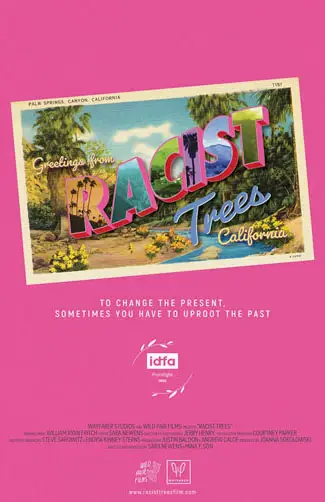
"…a captivating peek into institutional equality...."

